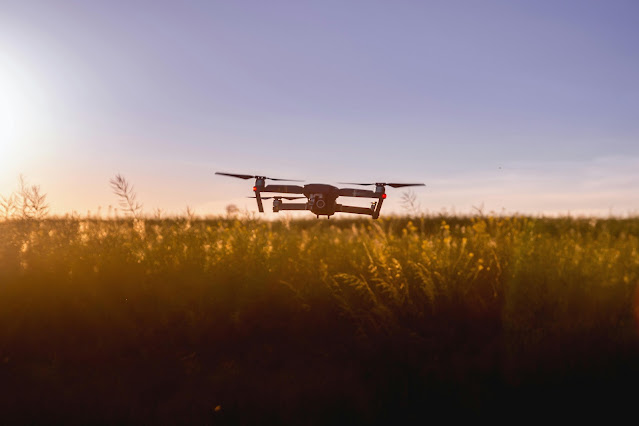Drones have become increasingly helpful in the agriculture sector due to their ability to provide valuable data and perform various tasks that enhance farming efficiency and productivity. Here are some ways in which drones are used in agriculture:
1. Crop Monitoring and Assessment: Drones equipped with high-resolution cameras and sensors can capture detailed imagery of crops. This imagery helps farmers monitor crop health, detect disease or pest infestations, assess plant growth, and identify areas that might need special attention.
2. Precision Agriculture: Drones can be programmed to fly over fields and collect data on factors like soil moisture, temperature, and nutrient levels. This data is then used to create precise maps that guide farmers in applying fertilizers, pesticides, and water only where they are needed. This reduces waste and promotes efficient resource utilization.
3. Field Mapping: Drones can create accurate and up-to-date field maps, including elevation and topography data. These maps aid in land planning, drainage management, and overall farm design.
4. Planting: Some drones are designed to plant seeds with high precision. This eliminates the need for manual labor and speeds up the planting process, especially in large fields.
5. Crop Spraying: Drones equipped with spraying systems can apply pesticides, herbicides, and fertilizers to crops with precision. This reduces chemical usage, minimizes human exposure to potentially harmful substances, and reduces the environmental impact.
6. Livestock Monitoring: Drones can help monitor the movement and health of livestock, enabling farmers to detect issues early and manage their herds more effectively.
7. Disease Detection: By using specialized cameras and sensors, drones can quickly identify signs of diseases or nutrient deficiencies in crops, enabling prompt intervention.
8. Yield Estimation: Drones can generate detailed crop yield estimates by analyzing the data collected during aerial surveys. This information is vital for planning harvest logistics and estimating potential revenue.
9. Weather and Climate Monitoring: Drones equipped with weather sensors can provide real-time weather data specific to a particular location, helping farmers make informed decisions about planting, irrigation, and other activities.
10. Erosion and Soil Analysis: Drones can survey erosion patterns and analyze soil composition, helping farmers implement erosion control measures and select appropriate crops for different soil types.
11. Insurance Assessment: In case of crop damage due to natural disasters or other factors, drones can provide rapid and accurate data for insurance claims, simplifying the claims process.
Overall, drones offer a cost-effective and efficient way to collect data, make informed decisions, and implement precision farming techniques. By leveraging drone technology, farmers can increase yields, reduce resource wastage, and promote sustainable agricultural practices.




0 Comments